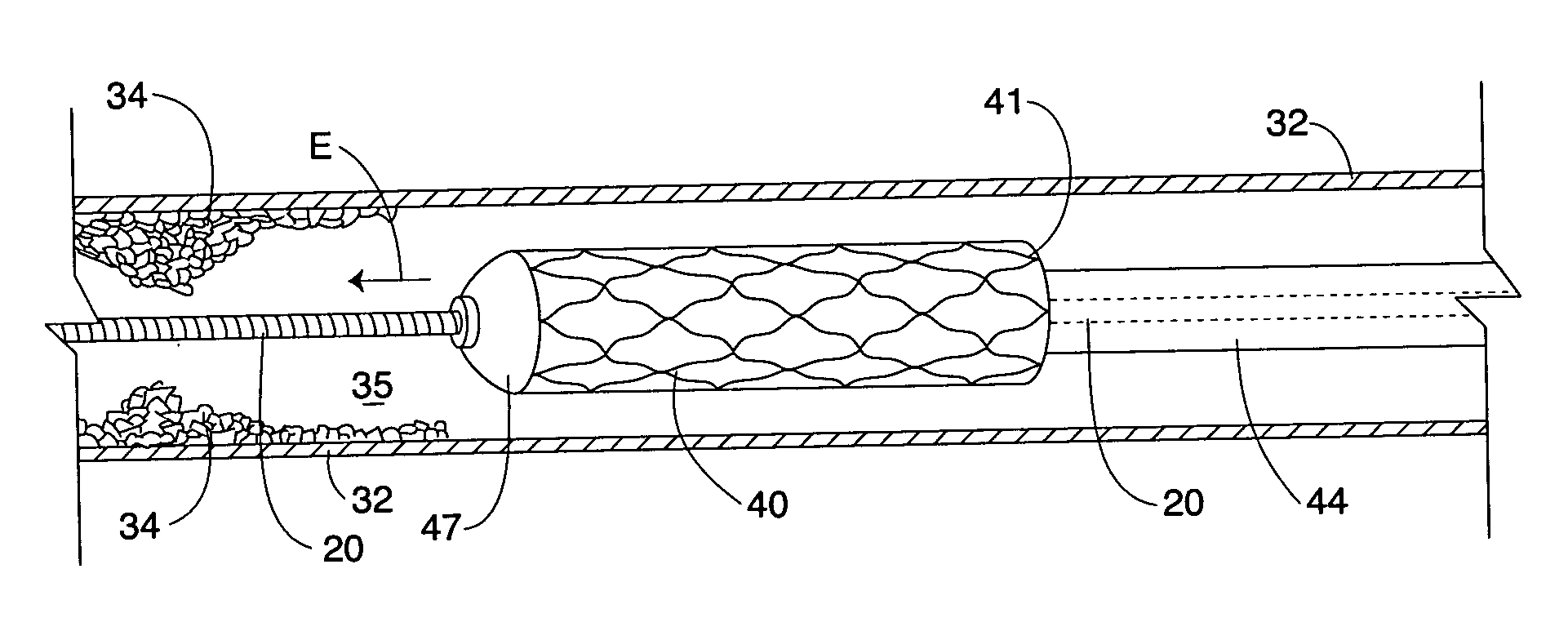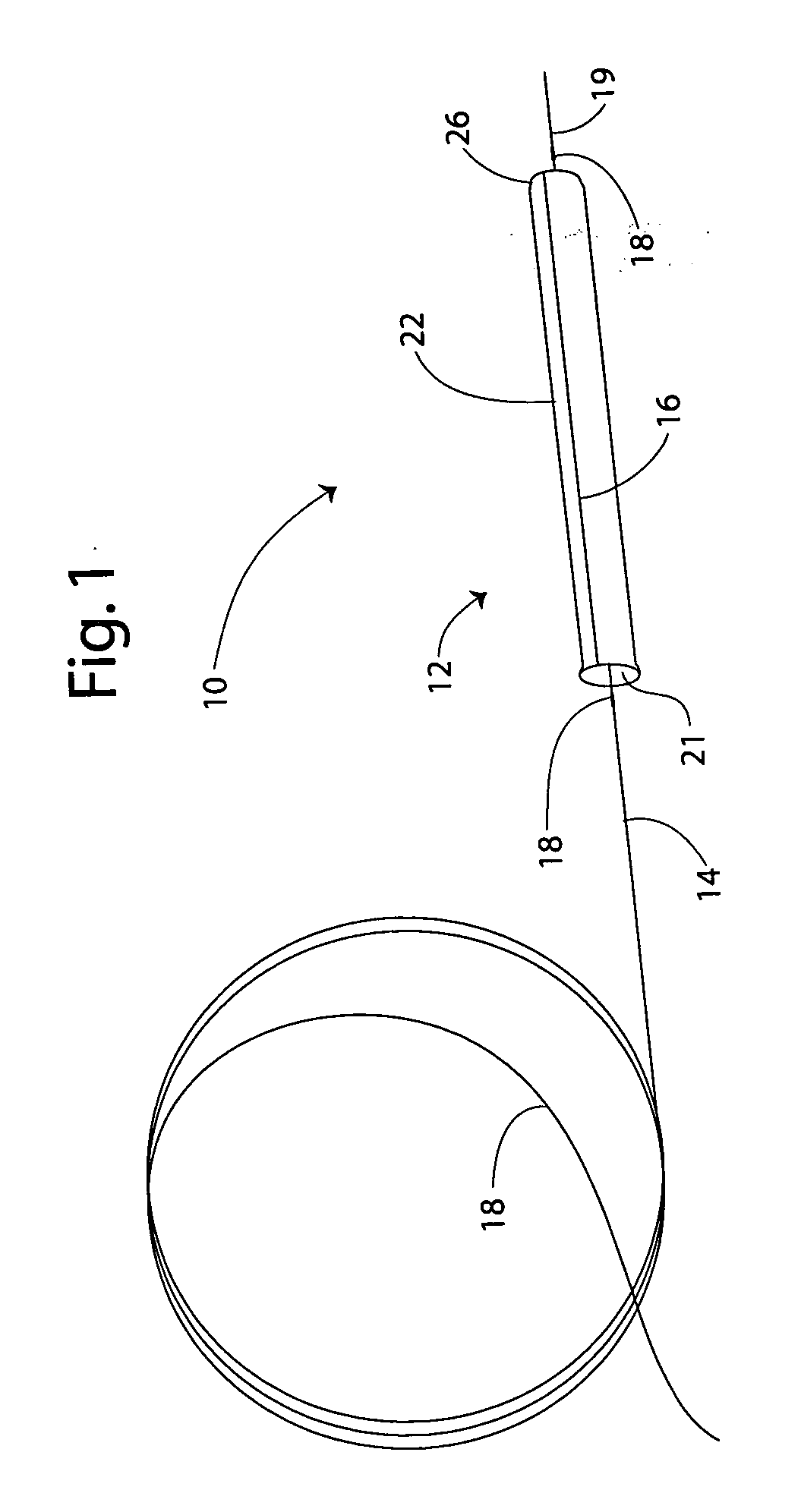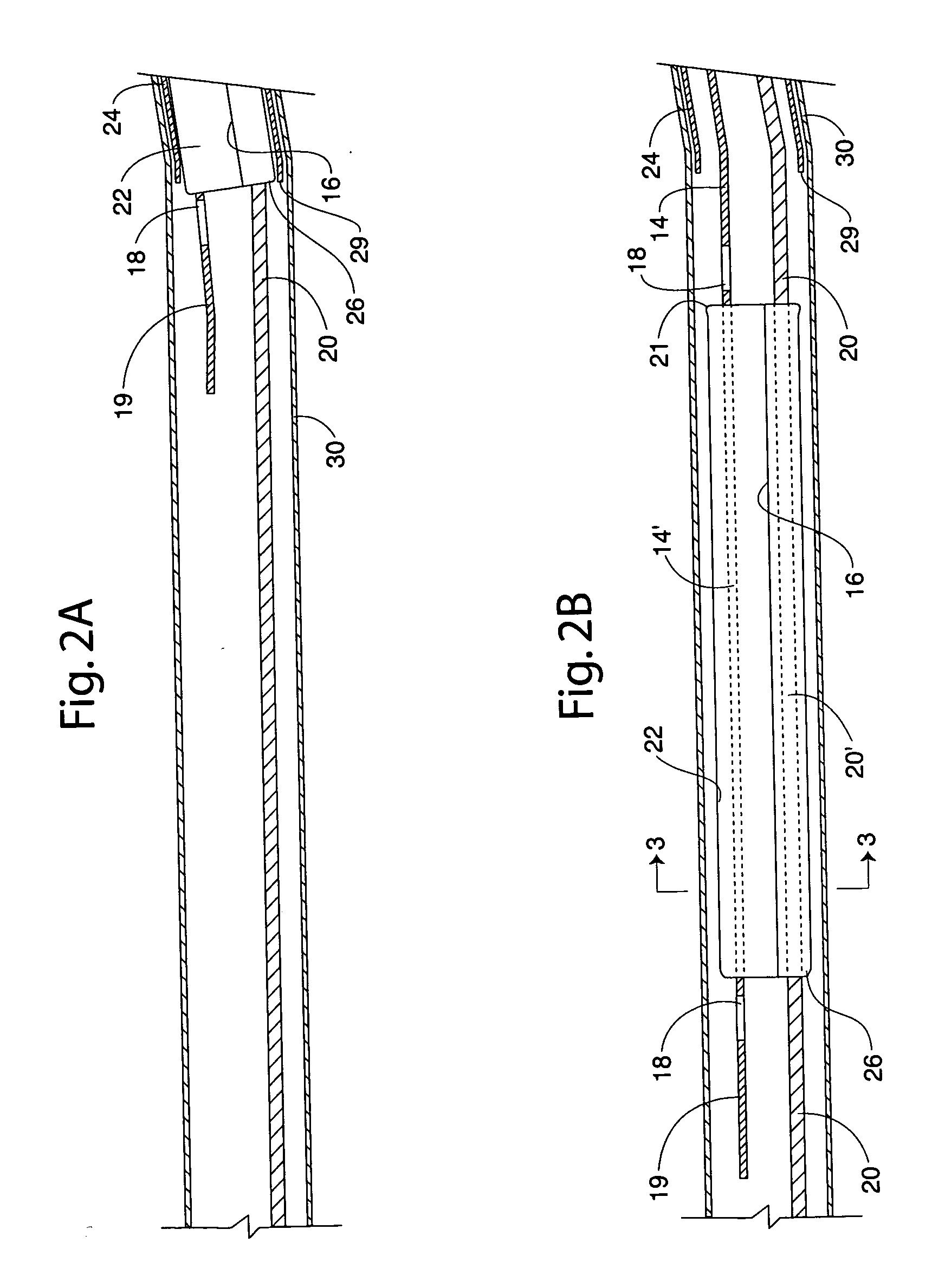Method for placing a stent through a constricted lumen, and medical device
a technology of constricted lumens and stents, applied in the field of medical procedures and devices, can solve the problems of preventing affecting the advancement of stents, and affecting the progress of stents,
- Summary
- Abstract
- Description
- Claims
- Application Information
AI Technical Summary
Benefits of technology
Problems solved by technology
Method used
Image
Examples
Embodiment Construction
Definitions
[0028] As used herein, the term “patient” refers to any mammal in need of medical treatment.
[0029] The term “lumen” refers to any opening in a patient including, for example, a human artery.
[0030] The term “access artery” may be any artery used by a medical service provider such as a cardiologist or cardiology team to obtain access to an area of occlusion within a patient's arterial system. This may be, for example, an artery in the patient's arm or wrist. It may also be, for example, an artery near the patient's groin, such as the femoral artery.
[0031] The terms “constricted lumen” or “constricted portion of a lumen” mean any restriction to the passage of a stent. Non-limiting examples include buildup of material along an arterial wall, a tortuous bend in an artery (or other lumen) or a previously-placed stent.
Description of Specific Embodiments
[0032]FIG. 1 presents a perspective view of a medical device 10 in accordance with the present invention, in one embodim...
PUM
 Login to View More
Login to View More Abstract
Description
Claims
Application Information
 Login to View More
Login to View More - R&D
- Intellectual Property
- Life Sciences
- Materials
- Tech Scout
- Unparalleled Data Quality
- Higher Quality Content
- 60% Fewer Hallucinations
Browse by: Latest US Patents, China's latest patents, Technical Efficacy Thesaurus, Application Domain, Technology Topic, Popular Technical Reports.
© 2025 PatSnap. All rights reserved.Legal|Privacy policy|Modern Slavery Act Transparency Statement|Sitemap|About US| Contact US: help@patsnap.com



